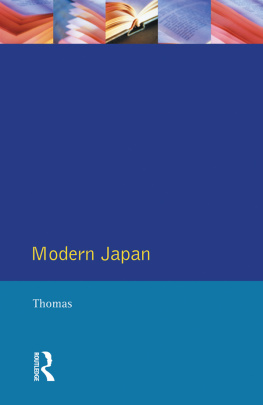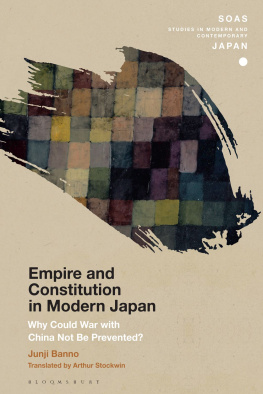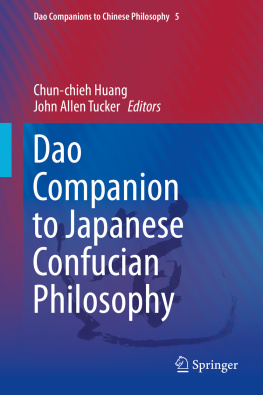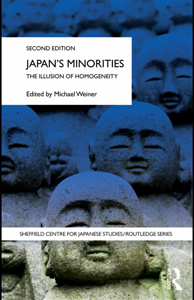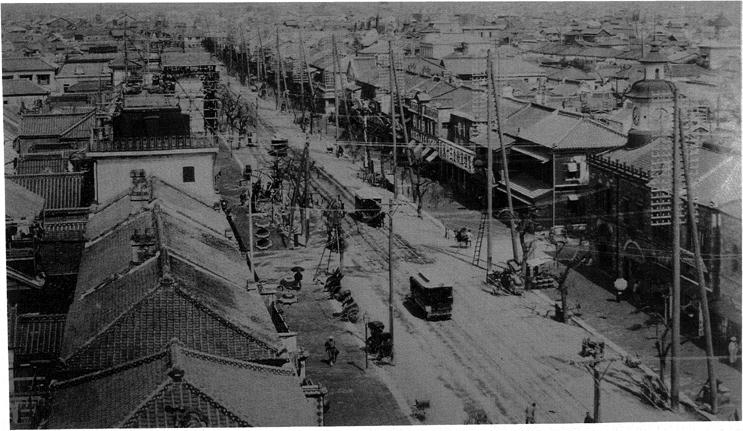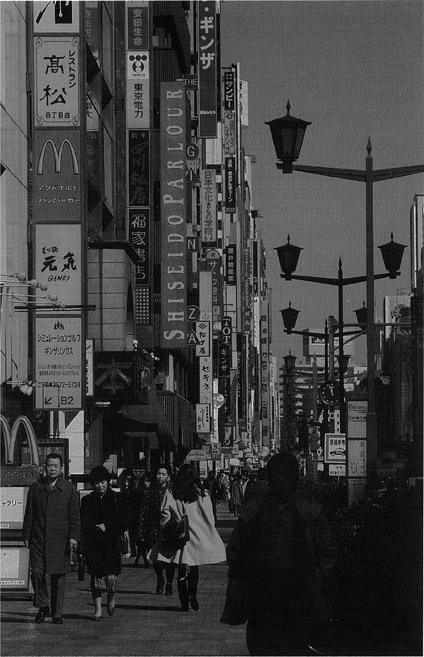Modern Japan
Overleaf
Modern Japan
A Social History since 1868
J. E. THOMAS
First published 1996 by Addison Wesley Longman Limited
Published 2014 by Routledge
2 Park Square, Milton Park, Abingdon, Oxon OX14 4RN
711 Third Avenue, New York, NY 10017, USA
Routledge is an imprint of the Taylor & Francis Group, an informa business
Copyright 1996, Taylor & Francis.
All rights reserved. No part of this book may be reprinted or reproduced or utilised in any form or by any electronic, mechanical, or other means, now known or hereafter invented, including photocopying and recording, or in any information storage or retrieval system, without permission in writing from the publishers.
Notices
Knowledge and best practice in this field are constantly changing. As new research and experience broaden our understanding, changes in research methods, professional practices, or medical treatment may become necessary.
Practitioners and researchers must always rely on their own experience and knowledge in evaluating and using any information, methods, compounds, or experiments described herein. In using such information or methods they should be mindful of their own safety and the safety of others, including parties for whom they have a professional responsibility.
To the fullest extent of the law, neither the Publisher nor the authors, contributors, or editors, assume any liability for any injury and/or damage to persons or property as a matter of products liability, negligence or otherwise, or from any use or operation of any methods, products, instructions, or ideas contained in the material herein.
ISBN 13: 978-0-582-25961-4 (pbk)
British Library Cataloguing in Publication Data
A catalogue record for this book is available from the British Library
Library of Congress Cataloging-in-publication Data
Thomas, J. E., 1933
Modern Japan: a social history since 1868/J.E. Thomas.
p. cm.
Includes bibliographical references and index.
ISBN 0582259622. ISBN 0582259614 (pbk.)
1. Japan History 1868 I. Tide.
DS881.9.T496 1996
952 dc20 | 9551035
CIP |
Contents
Photograph by Kozburo Tamamura, appearing in Japan Digest Vol. 2 No. 1, July 1991.
Reproduced courtesy of Old Japan
Panos Pictures
Nishaka-e print by Ipposai Hoto
Photograph by permission of Professor Gordon McVay
Hulton Deutsch Collection Limited
The Buraku Liberation Research Institute
Authors photograph
The Mainichi Newspapers
Imperial War Museum
Authors photograph
Japan Information & Cultural Centre
Photograph by Philip Thomas
Whilst every effort has been made to trace the owners of copyright material, in a few cases this has proved to be problematic so we take this opportunity to offer our apologies to any copyright holders whose rights we may have unwittingly infringed.
It is a truism that the writing of a book is accompanied by a need for help and advice: and so it has been in my case. I wish to express my gratitude to those people who so freely gave me information, and admonition, and to those who went to so much trouble to read sections of the book. I begin by thanking Mr Hasegawa Haruo, Counsellor and Medical Attach at the Embassy of Japan, and Miss Kakinuma Mika of the Japanese Centre for Intercultural Communication, both of whom helped with difficult specialist information. I am grateful to two representatives of campaigning organisations in Japan for giving me permission to use their material. These are Mr Araijunji of the National League for Support of The School Textbook Suit in Tokyo, and Mr Nakamura Seiji of the Buraku Liberation Research Institute in Osaka. Next I would like to thank experts in Japan, who commented on the draft text. These are Professor Uesugi Takamichi of Kyoto University, Professor Shimada Shuichi of Chuo University, Professor Yamaguchi Makoto of Ryutsu Keizai University and Professor Hirasawa Yasumasa of Osaka University. Others who read chapters, and gave of their valuable time were Mr Simon Thomas, to whom I am particularly obliged, because of his critical and unfailing help, Mrs Michiko Homma Thomas and Ms Judith Cherry. I am grateful to Maurice Vinden who was a prisoner of war on the Burma railway. He brought alive for me the horror which he and others suffered. Finally I owe more than I can express to Ms Nakamura Keiko of the Information Section of the Embassy of Japan in London. For many years she has been indefatigable in sending me material on Japan which she identifies as being of interest to me, and has always replied promptly to any request I make, however weird it might be. I owe her special thanks. To my typist, Mrs Heather Blackburn of the Department of Adult Education in the University of Nottingham I am most grateful. Her patience, speed, and relentless cheerfulness were a delight. Thanks also go to Mrs Kate Booth for help with typing. Thanks too to Longman for giving me the opportunity.
All of these people helped. But in the usual way I must absolve them from supposed error, of fact or of analysis. This book is my responsibility.
This book is dedicated to:
(in order of appearance)
Olwen, Simon Gerard, Colleen Teresa, Philip Owain, Michiko, Joseph Matthew McDonnell, Henry Takashi Homma, Emily Caitlin McDonnell, and those as yet unborn.
Celebrating their rich heritage.
J.E. THOMAS
Overleaf
This book arose out of the experience of teaching Japanese history to a variety of students from undergraduates to those attending adult education classes. Especially with history students, it became clear that the modern history of Japan is a subject with a lot of appeal. There are many reasons for this, ranging from the novelty of the subject which is refreshing to those whose historical palate has become rather jaded by more traditional areas of history, to the intrinsic, and increasing, fascination of Japan. It also became clear that younger people especially are interested in the nature and evolution of Japanese society, rather than the rather exclusive focus of some years ago on military and political history. This book attempts to cater for this interest in social structure, organisation and dynamics.
Naturally, the major features of the evolution of modern Japan, such as the role of militarism, must be, and are addressed. The form is that a chapter on a major period is followed by a chapter identifying an aspect of society which was, or is highlighted by that period. Thus, the period from 1912 to the 1930s raised questions of political freedom which were as important to women as to men. The discussion of this Taisho democracy is therefore followed by a long account of women in Japan. In the same way the belief that education was perhaps the major reason why the Japanese accepted their governments imperial policy, necessitates a longer assessment of education as a formative influence than is usually found in introductory texts. When dealing with such specialist areas, for the purpose of coherence I have brought the account up to the events of the present day.
Next page
